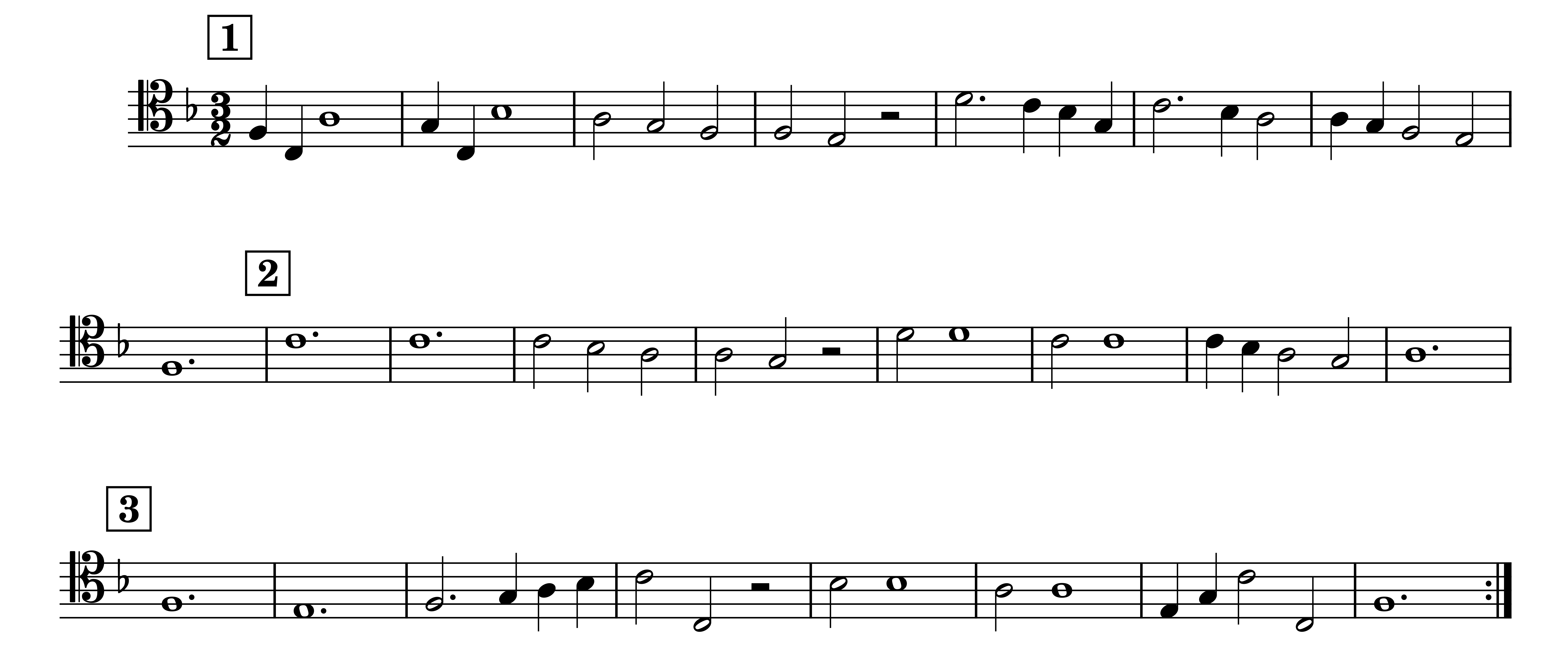Review of Concepts
38 Sight Singing Assignment
Tones of the Dominant Seventh Chord
First, memorize the tones of the V7 chord: sol, ti, re, fa. At the piano, play a tonic triad (do, mi, sol). Now, using solfege, sing the following short arpeggiations of V7, noticing the dissonant intervals contained within the tones of the chord. The last example resolves to I.

Melodies That Outline the Dominant Seventh Chord
Conduct and sing using solfege.
Wolfgang Amadeus Mozart, Eine kleine Nachtmusik K. 417, I.

Mozart, Symphony No. 25, K. 183, IV.

Franz Joseph Haydn, “London” Trio Hob. IV:1, I.

Duets
Prepare both parts with a partner, conducting and singing with solfege. As you prepare, take careful note of the measures that including dominant seventh harmony. Notice the doubly dissonant nature of this chord so that you can quickly and easily recognize it in dictation exercises and other contexts.
Ludwig van Beethoven, Piano Sonata Op. 2, No. 3, I.

Jacques Offenbach, Orphée aux enfers (1858), Galop

Mozart, Symphony No. 40, K. 550, III.

Round
Practice with one or more partners. Conduct and sing using solfege, noticing the measures where the harmony outlines tones from the dominant seventh chord. The second singer begins when the first singer reaches rehearsal number 2.
Dona nobis pacem (Traditional)


